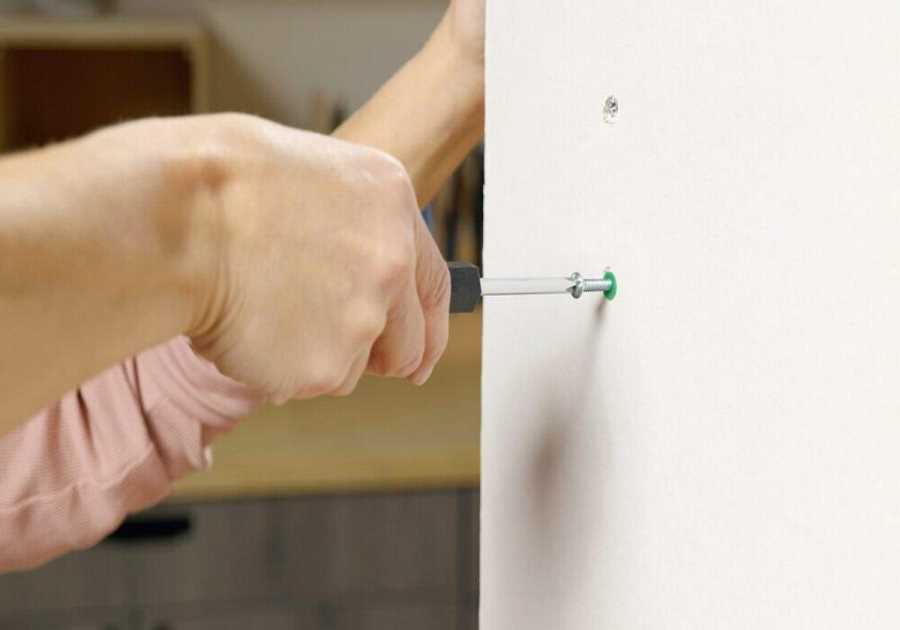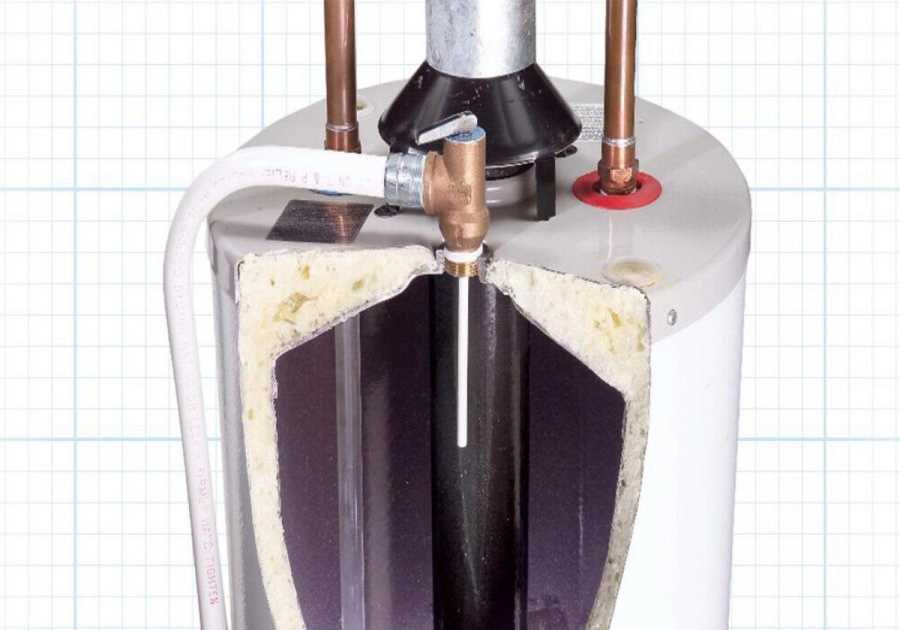One of my numerous responsibilities as assistant director at a career and technical center was maintaining a fleet of driver’s education vehicles. All the roofs had deep rusty scratches from the bright yellow Student Driver identification “car toppers,” which had been removed before going through the car wash.
After the students in our auto collision repair program fixed the damage, they installed paint protection film (PPF) to keep the cars looking great.
PPF was originally developed to shield helicopter blades from wear. In the 1980s, PPF became popular to protect clear-coated horizontal painted surfaces from acid rain etching. Today, PPF covers entire vehicles bumper-to-bumper.
What Is Paint Protection Film?
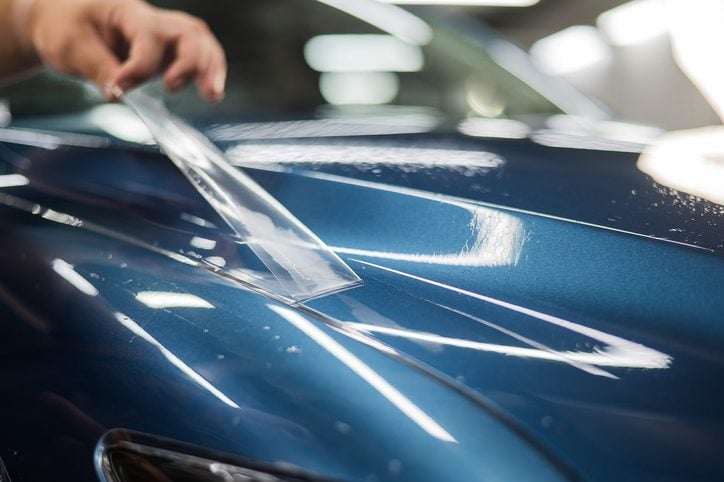
According to certified PPF installer Grant Menard, owner and CEO of Menard Premium Detailing in Warminster, PA, don’t confuse PPF (also called a “clear bra”) with vinyl wrap. Made from different materials, they’re installed differently and perform separate functions.
PPF is a crystal-clear covering that protects vehicle paint from nicks, scratches, chemical stains, damage from road salt and discoloration from harmful ultraviolet (UV) radiation. Vinyl wrap, however, offers minimal paint protection. It’s all about color or graphic customization and visual aesthetics, and it’s cheaper than a full repaint job.
According to 3M, thermoplastic polyurethane is the main ingredient in PPF. According to Vinylinfo.org, vinyl is made from chlorine, ethylene and additives, giving it certain properties for specific applications — flexibility or rigidity, hot or cold environments, etc.
Paint Protection Film Pros and Cons
In the U.S., the average age of a car is now more than 12 years. Guarding and maintaining a vehicle’s paint finish over the years can be time-consuming and costly. Installing PPF is one way to keep your paint looking factory fresh, but it may not be for everyone.
Pros
- Excellent for protecting paint against oxidation, environment (bird droppings, leaf stains) and damaging everyday road debris.
- Preserves factory paint finish from swirl marks, fading and fine surface cracks.
- Adheres to about any non-porous surface, so it can be installed on the windshield, headlamps, tail lamps and even wheels and interior trim.
- Transparent and UV resistant.
- Self-healing if scratched.
- Can be installed over vinyl wrap.
- Ten-year lifespan when properly installed and maintained; vinyl wrap lasts less than five years.
- The entire vehicle doesn’t have to be covered.
- Easily removable without damaging paint.
- Clear, gloss, satin, matte, high-gloss metallic and tinted finishes are available.
Cons
-
- Difficult to install.
- Insurance may not cover replacement after an accident.
- May not protect against all stone chipping or damage from other airborne road debris when traveling faster than 60 mph.
- Requires extensive surface preparation.
- May peel, discolor or blister if installed improperly or poorly maintained.
- May need to add a ceramic coating.
- Will not restore damaged paint.
- Can only be hand washed following time-tested car washing techniques.
- Not available as a new car option.
DIY or Pro-Installed Only?
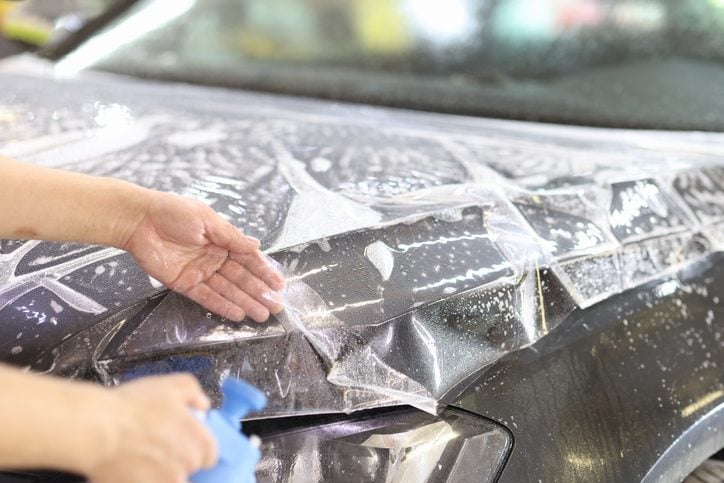
According to Menard, if you have the time and patience, paint protection film installation can be a DIY project. Start on flat surfaces (hood, roof) before tackling tricky curved sections (fenders, bumpers).
Menard says surface preparation and proper care are key to extending the life of PPF. Check if the manufacturer will honor the warranty for DIY installations. Pre-cut kits in different thicknesses also make DIY installation less complicated.
Menard’s shop uses a programmable plotter (a wide-format printer) with the capability to pre-cut PPF for a custom fit. He also cuts the PPF a bit longer to “roll” and cover exposed edges. This step greatly increases installation time, but virtually eliminates any visible PPF seams around panel edges, headlamps, body seams or door openings.
The cost of professionally installed PPF depends on a vehicle’s uniqueness, age, paint condition and other factors, and how much (or little) of your vehicle you want covered.
A quality shop will:
- Decontaminate the paint (i.e. thoroughly and carefully remove any contaminants embedded in the finish) before installing PPF.
- Remove all exterior body trim and emblems, door hardware, headlamps, tail lamps, etc., including the area behind the door handles and even the wiper arms for complete, seamless coverage.
Cost: Pro-installed PPF packages
- Partial front coverage (hood, bumper, headlamps) runs $600 to $1,500.
- Full front-end coverage (hood, fenders, bumpers, headlamps, side-view mirrors) runs $2,000 to $2,500.
- “Track” or “Highway,” which includes the full front plus the areas most frequently damaged from rock chips, runs $2,800 to $4,000.
- On average, expect to pay $5,000-plus to fully cover a typical SUV or four-door sedan.
Cost: DIY installation
- A 6- by 60-in. roll of clear PPF for small sections (leading edge of hood, door sills) runs approximately $20.
- A 5- by 4-ft. roll of black vinyl wrap costs $50 to $60.
Is Paint Protection Film Durable?
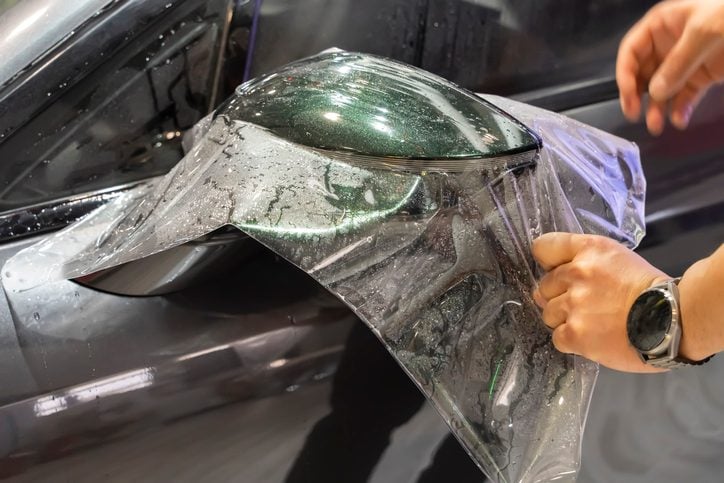
Yes. PPF features three tough polyurethane layers, plus an additional layer of acrylic adhesive.
Especially hard-wearing PPF with elastomeric polymers have “self-healing” properties. This allows chips or scratches to be removed with heat or even hot water. Some manufacturers offer a limited 10-year warranty against defects, yellowing, bubbling or cracking if professionally installed by authorized contractors.
Is Paint Protection Film Good or Bad for Resale Value?
It depends.
Keeping a vehicle’s paint looking like it just rolled off the assembly line can increase resale value. This alone makes PPE a worthwhile investment, especially for protecting classic, exotic and other high-end vehicles. However, depending on the make and model, the initial cost may be difficult to justify.
All things being equal, if you had to choose between a used car with dull, chipped, faded, or worn paint or one that looked new, which one would you go with?
Did you miss our previous article...
https://rsssuperfeeds.com/life-hacks/what-are-hid-headlights



